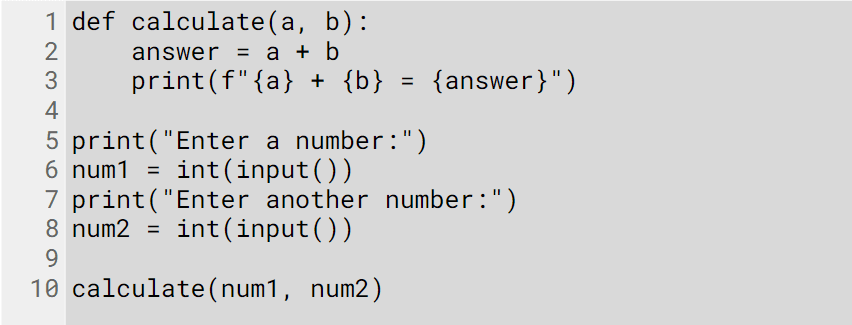Year 11
These resources will be removed by end of Summer Term 2025.
Switch to our new teaching resources now - designed by teachers and leading subject experts, and tested in classrooms.
Lesson details
Key learning points
- In this lesson, we will explore how to create our own functions. Functions are a type of subroutine that allow us to return a value. We have used them before when we have used code like print() and input(). We will also explore the difference between a function and procedure.
Licence
This content is made available by Oak National Academy Limited and its partners and licensed under Oak’s terms & conditions (Collection 1), except where otherwise stated.
3 Questions
Q1.
In the image above, how many parameters does the subroutine "calculate" take?

1
3
4
Q2.
In the image above, which one of the statements below best describes what is happening at line 10?
It is adding a and b but will not output the answer until the subroutine has been called
It will prompt the user to enter two numbers
The subroutine calculate is being created/defined.
Q3.
Using the image above, on line 1, are "a" and "b" described as arguments or parameters?
Arguments
3 Questions
Q1.
What will be the return value based on the function call to_the_power(3,2)?

12
3
6
Q2.
What will be the return value based on the function call find_highest(12,9)?

3
9
No return value
Q3.
What will be the return value based on the function call multiple(30,3)?

No

